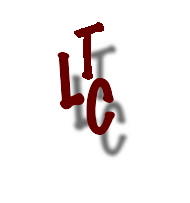Virginia Woolf and the art of doubt: modern fiction between Moore and Montaigne
Résumé
Virginia Woolf (1882-1941) read Michel de Montaigne—‘the first of the moderns,’ inventor of the modern art of doubt—from about 1900 to the end of her life. In light of her comments on G. E. Moore, and in comparison with readings of Montaigne by Bloomsbury figures Leslie Stephen, Lytton Strachey, Leonard Woolf, and T. S. Eliot, this essay explores Woolf’s creative embrace of Montaignian scepticism at a breakthrough moment in the forging of her modernist aesthetics. Woolf’s rereading of the Essais in 1923-25 at once nourished her own essays on modernist poetics during this period (‘Montaigne,’ ‘Mr Bennett and Mrs Brown,’ ‘Character in Fiction’) and provided the crucial key to the problem of modern character-drawing she poses in 1919 and again in ‘Montaigne’: how to give a sense of ‘the whole map, weight, colour, and circumference of the soul in its confusion, its variety, its imperfection.’ Through select passages that illustrate the genetic evolution of Mrs. Dalloway from the story ‘Mrs Dalloway in Bond Street’ and ‘The Hours’ manuscript, this essay traces Woolf’s arduous, creative, sometimes verbatim translation of 1) Montaigne’s historically momentous doubt into Mrs. Dalloway’s foundational scepticism; 2) his fascination with the everyday into her novel’s one-day structure; 3) his self-portraiture into her modern character-drawing, that is, his agile pursuit of his own unfixable soul into a poetics supple enough to chase after her characters’ fleeting souls; 4) his exemplary lived wisdom that ‘To Study Philosophy Is to Learn to Die’ into her modern arts of life and loss.
Mots-clés
Modernism; Woolf, Virginia; Montaigne, Michel de; Pascal, Blaise; Doubt; Scepticism; Character-drawing; Bloomsbury; Mrs Dalloway

